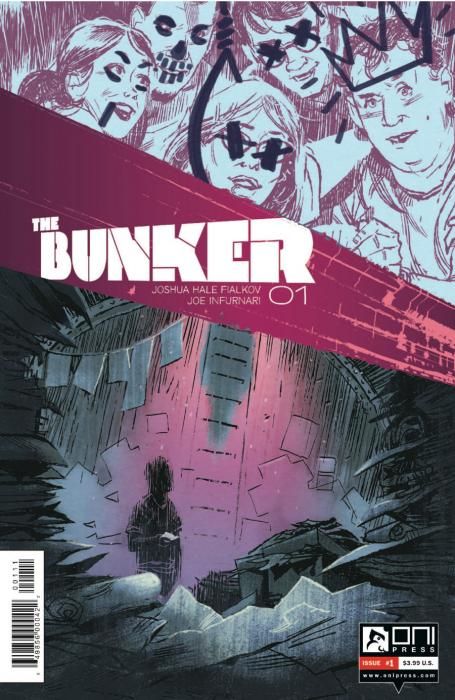"The Bunker" by Joshua Hale Fialkov and Joe Infurnari debuted digitally last year, and now, the first five digital installments of the story have been released on a double-sized print issue with color added. While the plot of "The Bunker" hinges on time travel, its mechanics and general shape belong solidly to the apocalypse/doomsday and teenage horror genres.
A group of friends bury a time capsule, but when they return to harvest it, it contains items from the future, not the past. The opening pages are a great hook, and the time-travel-by-artifact plot device works well to open a vein of existing interpersonal tensions between friends. The science fiction serves the plot, but the characterization is shallow thus far. The discovery of the bunker sets off a chain of events that feel right out of a film or a TV series, and that's a double-edged sword. The story flows quickly, but while the arguments, prophecies and ultimate schism in the group are suspenseful, they are also staples of melodrama.
Fialkov deliberately begins "The Bunker" with five friends are walking in the woods. By personality type, they fit squarely into the horror stereotypes of Slut (Natasha), Jock (Daniel), Brain (Grady), Fool (Billy) and Virgin (Heidi). In the details, that's not quite right, because the not-as-pretty friend of the pretty girl is technically not a virgin, and all five characters display both ambition and analytical intelligence. Nevertheless, they still adhere to their original archetypes closely, and the soap opera-like infidelity and recrimination also proceed like clockwork.
For a character-driven story, none of the five main characters are unusual or sympathetic, making it difficult for the reader to be more invested in their fate and thus the larger stakes. At the end of forty pages, Natasha and Daniel, the more villainous of the pack, still feel flat. Grady's future self is so certain of his role that he comes across as dogmatic and self-righteous, scarily so. Of the five, only Heidi and Billy show real vulnerability instead of acting out in the situation, but they are also defined by their victim roles.
Future Billy's letter is the most poignant part of the story but in the present, the character functions as comic relief. That said, Fialkov and Infurnari's pacing and suspense are taut and well-executed. All of the elements of the premise are nothing new, but Fialkov has put them together well, making excellent use of the premise. His use of foreshadowing is excellent and creepy, especially a photograph that seems to indicate who will live and who will die.
The plot twists are sharp and well-executed. The name of the letter-writer to Grady comes as an excellent, pleasurably unpredictable shock and the ending cliffhanger is likewise unexpected and creepy.
Infurnari's artwork is distinctive for its scratchy and chalk-like mark. He has an excellent sense of light, making a scene after apocalyptic "Mass Extinction" as pretty as any sunrise. His pastel, muted colors and script lettering add to the tone, giving an ethereal fragility to the characters' states of mind, and his facial expressions also add pathos beyond what the dialogue alone can eke out.
"The Bunker" #1 is strong on suspense and plotting and weaker on characterization, but overall this is a gripping beginning and the unexpected twists will keep readers hooked.

